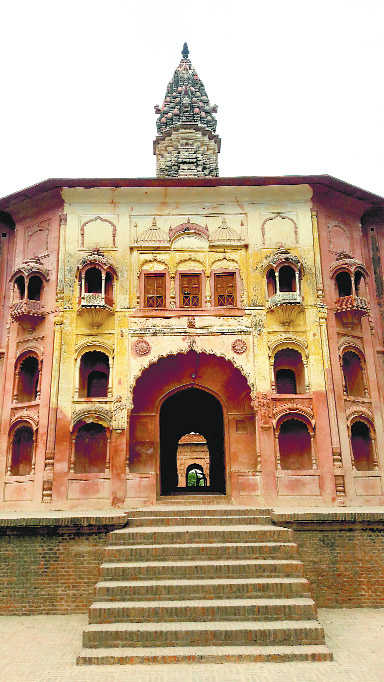Nabha House a neglected heritage
Vishal Joshi
Nabha House, once signature of erstwhile royal grandeur, in Kurukshetra has become a picture of neglect.
The royal family of Nabha in Punjab had constructed this palatial heritage building located opposite Sannehit Sarovar, an important landmark. It is being conserved by the Archaeological Survey of India (ASI). However, the heritage complex does not offer any information to visitors about the preserved site.
In the absence of its organised promotion by the authorities, most of the visitors miss the well-maintained structure. The building stands on a raised platform. The either side of the main grand entrance is decorated with four arched ‘miharab’ or niches. There are two beautiful pillared jharokhas on its second floor. The base and the top of these pillars have been decorated with lotus design.
However, the key attraction of the compound is a temple dedicated to Lord Brahma, a symbol of the creator of the universe. It is built on Navaratha or a nine-corner plan.
The wooden door on the entrance is studded with decorative iron nails, which represent the Hindu style of architecture in the early British era. The main entrance through another gate leads to a rectangular courtyard. The stairs on the southern side of the courtyard lead to the temple on the second storey.
Rajesh Purohit, director of Kolkata-based Indian Museum, says the miniature statue of Lord Brahma on the top floor of the building signifies the religious belief of the erstwhile Nabha family.
He says the building is about 100-year-old and it was preserved due to the efforts of a former Union Tourism Minister, Jagmohan. “It is popularly believed that the royal family members of Nabha princely state used to stay in the building during important religious occasions in Kurukshetra. The building has a unique architecture with glimpses of Punjab’s royalty,” says Purohit, who had earlier worked as the curator of Sri Krishna Museum here.
He says British-era bricks that were larger than ‘lakhori’ bricks introduced during the Mughal period were used in construction.
According to SS Boora, professor in the Kurukshetra University's Department of Tourism and Hotel Management, the authorities concerned have failed to explore the tourism potential of the protected complex. There is need for documentation of Nabha House with special focus on its cultural importance, he says.
Boora, an expert on heritage management, says there is need to work elaborately to ascertain who built the building and the guests they hosted and other details to attract visitors. “Our department is working to roll out a heritage walk with special emphasis on this ancient site. The ASI and the local administration should also include Nabha House as the key attraction of Kurukshetra for its organised promotion,” he says.










